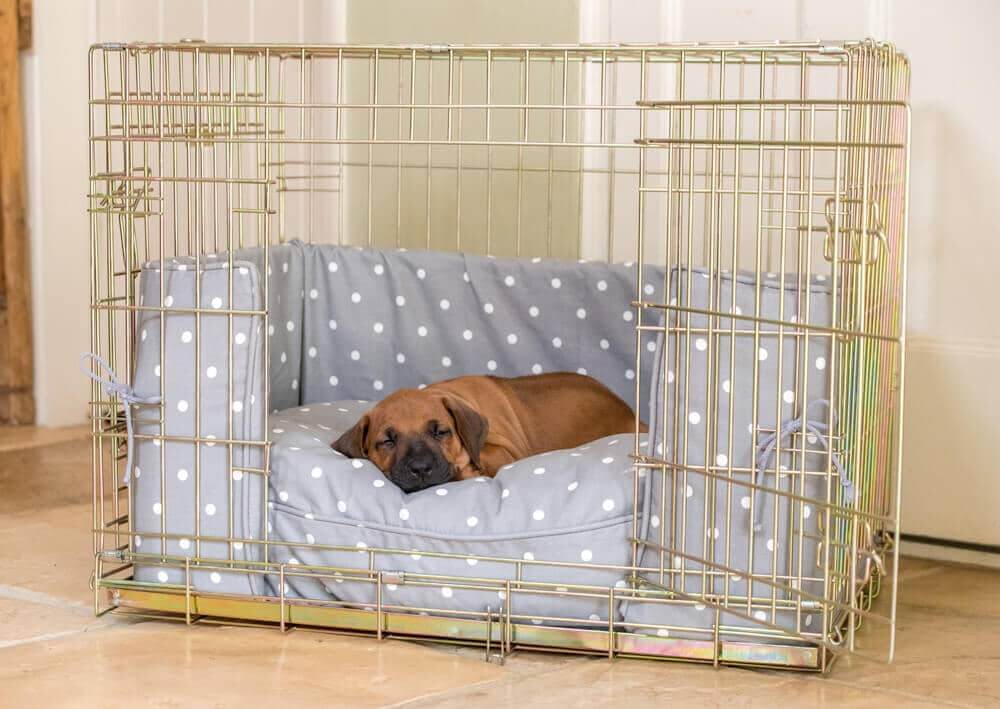how to crate train dog
How to Crate Train Your Dog

Crate training is a valuable tool for teaching your dog good manners and housebreaking. It can also provide your dog with a safe and comfortable place to relax when you're not home.
This article will teach you everything you need to know about crate training, including:
- The benefits of crate training
- How to choose the right crate for your dog
- How to introduce your dog to the crate
- How to crate train your dog

Benefits of Crate Training
There are many benefits to crate training your dog, including:
- Housebreaking. Crate training can help your dog learn to hold their bladder and bowels for longer periods of time. This can make housebreaking much easier.
- Prevention of destructive behavior. When your dog is left alone, they may become bored and destructive. Crate training can help prevent this by providing your dog with a safe and comfortable place to relax when you're not home.
- Increased safety. A crate can provide your dog with a safe space to retreat to when they're feeling stressed or scared. This can be especially helpful if you have young children or other pets in your home.
- Improved training. Crate training can help your dog learn basic obedience commands more quickly. When your dog is in their crate, they are more focused and less distracted. This makes it easier for them to learn new things.

Choosing the Right Crate for Your Dog
The first step in crate training is choosing the right crate for your dog. The crate should be big enough for your dog to stand up, turn around, and lie down comfortably. You should also make sure that the crate is made of a durable material that your dog can't chew through.
Here are a few things to consider when choosing a crate for your dog:

- Size: The crate should be big enough for your dog to stand up, turn around, and lie down comfortably.
- Material: The crate should be made of a durable material that your dog can't chew through.
- Door type: There are two main types of crate doors: swing-open doors and doors that slide open. Swing-open doors are easier for you to access, but they can be more dangerous for your dog if they try to jump out. Slide-open doors are more secure, but they can be more difficult for you to access.
- Features: Some crates come with features like dividers, water bowls, and toys. These features can be helpful, but they're not necessary.
Introducing Your Dog to the Crate
Once you've chosen the right crate for your dog, it's time to introduce them to it. The best way to do this is to start by letting your dog explore the crate on their own. Put some treats inside the crate and let your dog go in and out as they please.
Once your dog is comfortable going in and out of the crate, you can start to close the door for short periods of time. Start by closing the door for just a few seconds and then open it again. Gradually increase the amount of time that you keep the door closed until your dog is comfortable being in the crate for extended periods of time.
Crate Training Your Dog
Once your dog is comfortable being in the crate, you can start crate training them. Here are a few tips:
/crate-training-puppies-2805067_v2-5be49c54c9e77c0051442812.png)
- Make the crate a positive place. Put your dog's favorite treats in the crate and let them go in and out as they please. You can also give your dog a Kong or other interactive toy to keep them occupied while they're in the crate.
- Start by crate training your dog for short periods of time. Start by crating your dog for just a few minutes at a time. Gradually increase the amount of time that you crate your dog until they can be crated for several hours at a time.
- Never punish your dog for whining or barking in the crate. Whining and barking are normal behaviors for dogs who are being crate trained. If you punish your dog for these behaviors, they will only become more afraid of the crate.
- Make sure your dog has enough exercise before you crate them. A tired dog is more likely to be calm and relaxed in the crate.
- Never leave your dog in the crate for too long. The maximum amount of time that you should leave your dog in the crate is four hours. If you need to leave your dog for longer than four hours, you should have someone come over to let them out.
Troubleshooting
If your dog is struggling with crate training, there are a few things you can do to help them.

- Make sure the crate is the right size. The crate should
Thank you for exploring our website by how to crate train dog. Your presence fuels our commitment to excellence. Come back for a more enriching experience!
